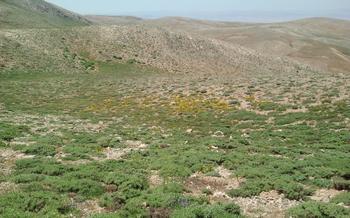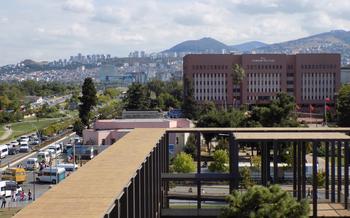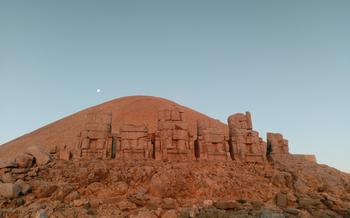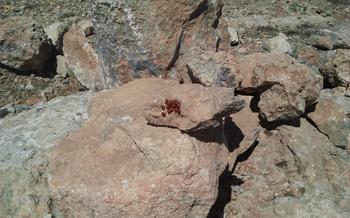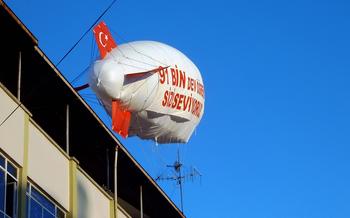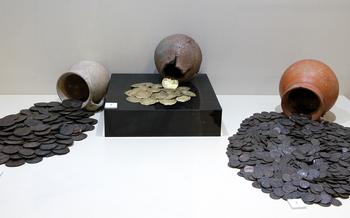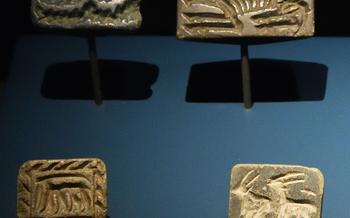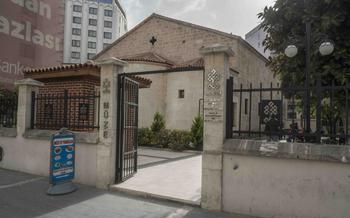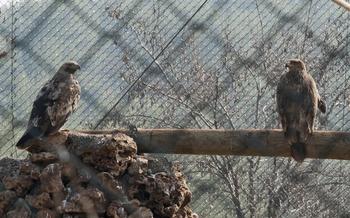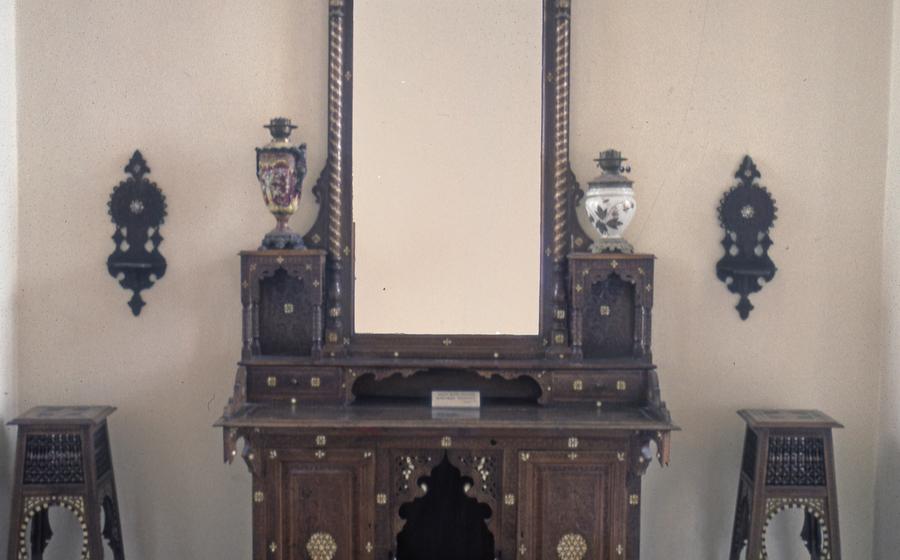
Malatya Museum
- Historical Background
- Location and Accessibility
- Exhibits and Collections
- Ancient Artifacts
- Islamic Art and Calligraphy
- Folklore and Ethnography
- Temporary Exhibitions
- Research and Publications
- Educational Programs
- Special Events and Activities
- Visitor Amenities
- Photography and Social Media
- Sustainable Tourism
- Local Recommendations
- Insider Tip
Historical Background
Malatya, a city steeped in history and culture, is home to the renowned Malatya Museum, a treasure trove of artifacts that narrate the captivating story of this ancient land. The museum's significance lies in its meticulously curated collection that spans various civilizations, shedding light on the rich tapestry of cultures that have shaped Malatya's identity.
As you step into the museum, you are greeted by an architectural marvel, a testament to the region's architectural prowess. Its grand facade, adorned with intricate carvings and traditional motifs, hints at the wonders that await within. The museum's establishment serves as a testament to the unwavering commitment to preserving and showcasing the cultural heritage of Malatya, ensuring that its legacy endures for generations to come.
Location and Accessibility
The Malatya Museum is conveniently located in the heart of the city, making it easily accessible by public transportation or private vehicle. To reach the museum, visitors can take a short walk from the historic Yeni Cami (New Mosque) or hop on a local bus that stops nearby. Ample parking is available for those arriving by car, ensuring a hassle-free visit. The museum's operating hours are from 8:30 am to 5:30 pm daily, except on Mondays. Admission fees are minimal, allowing visitors to enjoy the museum's treasures at an affordable cost.
Exhibits and Collections
The Malatya Museum houses a diverse and remarkable collection of artifacts that offer a glimpse into the rich cultural heritage of the region. Among the highlights of the museum's collection are ancient artifacts from various civilizations that once called Malatya home. These artifacts, spanning different eras and cultures, provide valuable insights into the region's fascinating history.
Must-see exhibits include a stunning collection of pottery from the Neolithic period, showcasing the artistic skills and craftsmanship of early settlements. The museum also features an impressive array of bronze and iron tools, weapons, and ornaments, offering a glimpse into the technological advancements of ancient civilizations. Visitors can marvel at intricate jewelry, seals, and figurines, each telling stories of the people and societies that created them.
The museum's thematic sections and galleries are meticulously designed to showcase the diversity of Malatya's cultural heritage. From exhibits dedicated to local folklore and ethnography to displays of Islamic art and calligraphy, the museum provides a comprehensive exploration of the region's history, traditions, and artistic achievements. Educational programs and workshops offered by the museum further enhance the visitor experience, allowing for a deeper understanding of the cultural treasures on display.
Ancient Artifacts
Among the museum's most captivating exhibits are its collection of ancient artifacts that date back to various civilizations that once thrived in the region. These artifacts offer a tangible connection to the rich history of Malatya and provide valuable insights into the lives and customs of its ancient inhabitants.
One of the highlights of the collection is a stunningly preserved mosaic depicting scenes from Greek mythology. Discovered during an excavation in the nearby ancient city of Zeugma, this intricate artwork showcases the remarkable artistic skills of the Hellenistic period. Visitors can marvel at the vivid colors and detailed craftsmanship of this masterpiece, which has been carefully restored to its former glory.
Another must-see artifact is a collection of cuneiform tablets, inscribed with Akkadian texts that provide a glimpse into the administrative and economic practices of the Assyrian Empire. These tablets offer valuable information about trade, taxation, and the daily lives of the people who lived in the region during the 9th century BC.
The museum also houses an impressive collection of Hittite artifacts, including stone sculptures, pottery, and jewelry. These relics shed light on the advanced civilization of the Hittites, who ruled over Anatolia during the Bronze Age. Visitors can admire the intricate carvings and inscriptions on these artifacts, which offer clues about the religious beliefs, social structure, and artistic traditions of this ancient civilization.
Islamic Art and Calligraphy
The Malatya Museum also houses a remarkable collection of Islamic art, showcasing the rich artistic heritage of the region. Intricate calligraphy, ceramics, and textiles are displayed, providing visitors with a glimpse into the influence of Islamic culture and religion on the art and craftsmanship of Malatya.
Among the highlights of the Islamic art collection are exquisite manuscripts adorned with elaborate calligraphy. These manuscripts, written in various scripts such as Kufic, Naskh, and Thuluth, demonstrate the evolution of calligraphy styles and their significance in Islamic art. Visitors can admire the intricate details and harmonious compositions of these calligraphic masterpieces, which often incorporate geometric patterns and floral motifs.
Workshops or demonstrations of calligraphy are occasionally offered at the museum, providing visitors with an opportunity to learn about and appreciate this ancient art form. These workshops allow participants to try their hand at writing Arabic letters and phrases, gaining a deeper understanding of the techniques and artistry involved in Islamic calligraphy.
Folklore and Ethnography
The Malatya Museum also sheds light on the rich cultural heritage of the region through its exhibits on folklore and ethnography. These displays showcase traditional costumes, handicrafts, and everyday objects from Malatya's diverse ethnic groups. Visitors can gain insights into the cultural significance and stories behind these objects, which represent the unique identity and traditions of the local people.
Interactive displays or demonstrations of traditional crafts, such as carpet weaving, pottery, or embroidery, add an engaging element to the exhibits. These hands-on experiences allow visitors to learn about and appreciate the skills and artistry of local artisans.
The museum's ethnographic studies and research contribute to the preservation and documentation of local traditions. Through these efforts, the museum aims to safeguard the intangible cultural heritage of Malatya and promote its significance to future generations.
Temporary Exhibitions
The Malatya Museum often hosts temporary exhibitions that showcase unique themes or collaborations with other institutions. These exhibitions provide visitors with an opportunity to explore diverse aspects of art, history, and culture beyond the museum's permanent collection.
Current or upcoming temporary exhibitions are typically announced on the museum's website and social media channels. Visitors can stay updated on these exhibitions by following the museum's social media accounts or subscribing to their newsletter.
Temporary exhibitions often feature special events, lectures, or workshops that delve deeper into the exhibition's theme. These events provide visitors with an opportunity to engage with experts, learn more about the artifacts on display, and participate in hands-on activities.
By showcasing temporary exhibitions, the Malatya Museum strives to offer a dynamic and engaging experience for visitors, allowing them to explore new perspectives and appreciate the richness and diversity of Malatya's cultural heritage.
Research and Publications
The Malatya Museum serves as a vital center for scholarly research and publications, contributing significantly to the fields of archaeology, history, and museology. Its extensive library and archives provide a wealth of resources for researchers, including rare manuscripts, historical documents, and archaeological artifacts. The museum actively collaborates with universities and research institutions to conduct in-depth studies on the region's rich cultural heritage.
Notable publications from the Malatya Museum include comprehensive catalogs of its collection, excavation reports, and scholarly articles. These publications have shed light on the region's ancient civilizations, their artistic traditions, and their contributions to world history. The museum also collaborates with international experts and institutions to organize conferences, workshops, and seminars, fostering knowledge exchange and promoting cross-cultural dialogue.
Through its publications and research initiatives, the Malatya Museum plays a crucial role in preserving and disseminating knowledge about the region's past. Its contributions have enriched our understanding of Anatolian history, art, and culture, making it a valuable resource for scholars, students, and anyone interested in exploring the region's diverse heritage.
Educational Programs
The Malatya Museum offers a wide range of educational programs designed to engage and inspire visitors of all ages. Guided tours led by knowledgeable museum educators provide in-depth insights into the museum's collection and the history of Malatya. These tours are tailored to different audiences, including school groups, families, and general visitors. Interactive workshops and activities encourage hands-on learning and exploration, allowing visitors to delve deeper into the museum's themes and subjects. The museum also collaborates with local schools to develop curriculum-aligned programs that bring history and culture to life for students. Online resources and educational materials are available on the museum's website, enabling visitors to continue their learning journey beyond their visit.
Special Events and Activities
The Malatya Museum also hosts a variety of special events, festivals, and cultural programs throughout the year, enriching the visitor experience and providing a platform for local artists and cultural organizations to showcase their talents.
Temporary art installations, performances, and exhibitions often transform the museum's spaces, offering visitors a fresh perspective on the museum's collection and the contemporary art scene. These events provide opportunities for visitors to interact with artists, learn about their creative processes, and appreciate diverse forms of artistic expression.
The museum also collaborates with local musicians, dance troupes, and theater groups to organize performances and workshops that celebrate the region's rich cultural heritage. These events create a vibrant atmosphere and allow visitors to experience the living traditions of Malatya.
Visitors are encouraged to check the museum's website or social media pages for updates on upcoming events and activities. Participation in these events offers a unique opportunity to immerse oneself in the cultural tapestry of Malatya and create lasting memories.
Visitor Amenities
The Malatya Museum offers a range of amenities to enhance the visitor experience. For those seeking a deeper understanding of the museum's artifacts and collections, a well-stocked museum shop offers a variety of souvenirs, books, and educational materials. Visitors can delve into the cultural heritage of Malatya by purchasing replicas of ancient artifacts, traditional handicrafts, or publications on the region's history and archaeology.
To cater to the needs of weary travelers, the museum features an on-site café or restaurant that serves refreshments and local cuisine. Visitors can savor the flavors of Malatya while enjoying panoramic views of the city or relaxing in the tranquil ambiance of the museum gardens. Ample seating areas and rest areas provide a respite from the exploration, allowing visitors to recharge and reflect on the treasures they have witnessed.
The Malatya Museum is committed to providing an inclusive and accessible environment for all visitors. Ramps, elevators, and audio guides are available to ensure that individuals with disabilities can fully experience the museum's collections. Accessibility features such as Braille signage and tactile exhibits further enhance the visitor experience for those with visual impairments.
Photography and Social Media
The Malatya Museum encourages visitors to capture and share their experiences through photography. Visitors are welcome to take photos of the exhibits for personal use, but flash photography and tripods are not permitted to preserve the artifacts.
The museum actively engages with visitors on social media platforms. Visitors are encouraged to share their photos, tag the museum, and use relevant hashtags to connect with other museum enthusiasts. The museum's social media channels showcase highlights from the collection, behind-the-scenes glimpses, and upcoming events.
Virtual tours and interactive online content are available on the museum's website, allowing visitors to explore the exhibits remotely and learn more about the museum's collection. For Instagram enthusiasts, the museum offers photo opportunities and Instagram-worthy spots throughout its galleries, providing visitors with a chance to capture their memories and share them with the world.
Sustainable Tourism
The Malatya Museum is committed to sustainable practices and responsible tourism. It has implemented several initiatives to reduce its carbon footprint, conserve resources, and protect the environment. The museum uses energy-efficient lighting, recycles waste, and promotes the use of public transportation or walking to visitors.
Visitors are encouraged to adopt sustainable practices during their visit. They are advised to bring their own reusable water bottles and minimize the use of single-use plastics. The museum also partners with local businesses and organizations to promote sustainable tourism in Malatya. It works with hotels and restaurants to reduce food waste and encourages visitors to support local businesses that prioritize sustainability.
By embracing sustainable practices, the Malatya Museum is setting an example for other cultural institutions and promoting responsible tourism in the region. Visitors can contribute to the museum's sustainability efforts by being mindful of their impact on the environment and supporting local initiatives. Together, we can protect and preserve the cultural heritage of Malatya for future generations.
Local Recommendations
After immersing yourself in the rich cultural heritage of Malatya at the museum, take some time to explore the surrounding area and discover its many other attractions. Just a short walk from the museum, you'll find the stunning Grand Mosque of Malatya, a masterpiece of Islamic architecture with its intricate tilework and soaring minarets.
For a taste of local cuisine, head to the traditional Turkish restaurants in the old city, where you can savor mouthwatering kebabs, gözleme (savory pancakes), and the famous kayısı tatlısı (apricot dessert). Be sure to try the local apricots, which are renowned for their sweet and juicy flavor.
If you have time, venture out of the city to explore the natural wonders of Malatya. The nearby Mount Nemrut is a UNESCO World Heritage Site, home to the impressive tomb-sanctuary of King Antiochus I Theos of Commagene. The site offers breathtaking views of the surrounding countryside and is a must-see for history and nature enthusiasts.
Don't miss the opportunity to visit the nearby villages and towns to experience the authentic culture and traditions of Malatya. Engage with the locals, learn about their way of life, and discover hidden gems off the beaten path.
Insider Tip
For an unforgettable experience, visit the Malatya Museum early in the morning or late in the afternoon to savor the tranquility and avoid the crowds. This will allow you to fully immerse yourself in the exhibits and engage with the knowledgeable museum staff or docents. They will gladly share captivating anecdotes and insights about the artifacts, bringing history to life.
One hidden gem within the museum is the small, unassuming room dedicated to the ancient Hittite civilization. Here, you'll find a remarkable collection of Hittite seals, each intricately carved with symbols and figures that tell stories of a long-lost world. Take your time to examine these intricate works of art and imagine the hands that crafted them thousands of years ago.
